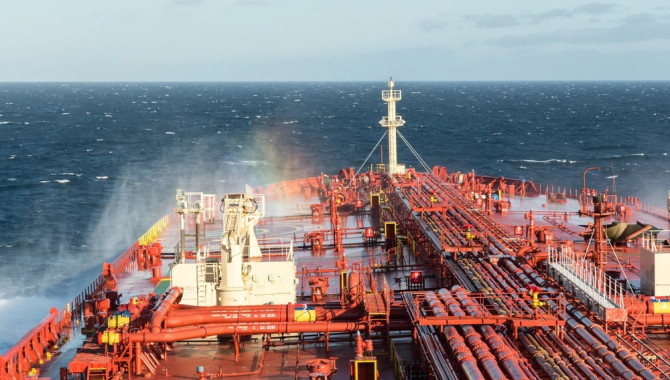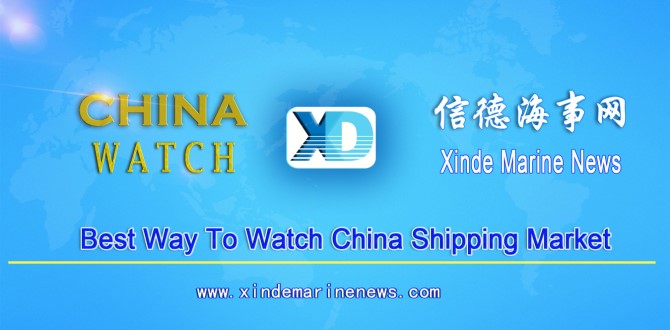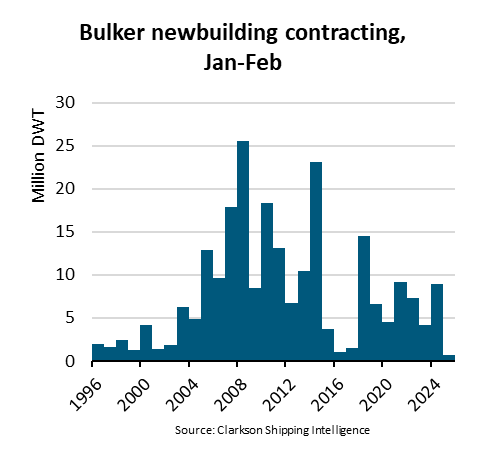
Recently Clarksons Research published the executive summary from their forthcoming semi-annual report ‘Shipping Review & Outlook’, which will be soon be available on the Shipping Intelligence Network.
Introducing the summary, Steve Gordon, Managing Director of Clarksons Research commented, “Despite a range of economic “headwinds”, our overall earnings indicator, the ClarkSea, has continued to trend upwards this year, increasing 12% y-o-y (2018: up 13% y-o-y). In the tanker sector (up 75% ytd, albeit from a low base), our projections, recent Middle East disruption aside, suggest underlying improvements over the next twelve months, with IMO 2020 and long haul trades providing a “boost” to demand. The LPG sector is also improving (up 60% ytd) while LNG continues its expansion phase. The struggles of the first half have been replaced by a much stronger Q3 for bulkers, although some shorter term factors, including iron ore supply reactivation and scrubber retrofit, may be at play. Containership charter rates have increased since start year (up 13%), led by the larger sizes – it seems support from “non-headline” fundamentals will be needed for these trends to continue. The Ro-Ro market has eased back but cruise investment continues. Offshore has seen activity, utilisation and rates edge upwards but progress has varied and challenges remain.”
Further extracts from the report’s summary are as follows:
Six months ago we suggested that the world economy “seemed more of a concern” and advised to monitor for “downgrades”. Developments since have added to the sense of unease. Projections for seaborne trade growth in 2019 have been downgraded to 1.7% in tonnes and 2.2% in tonne-miles (from 2.9% and 3.4% at start 2019). In tonnes terms, this would be the slowest growth environment since 2009, impacted by weakening economic conditions and issues such as the “trade war” and Vale dam collapse. For now, our 2020 projections are more positive but need to be monitored. Analysis of the complexities around the escalating “trade war” suggest that in isolation this is manageable from a shipping perspective (tariffs directly impact only 1.8% of seaborne trade and, after substitution trends, are reducing tonne-mile trade by just 0.5% in 2019). Dry bulk trade is projected to grow by a sluggish 1.3% in 2019, oil trade by 0.8% (2.9% in tonne-miles), and container trade by 2.5%. Trends in gas trade remain positive (LNG at 8%, LPG at 5%).
Our view that shipping supply is “manageable” still holds, with fleet growth projected at 3.3% in 2019, just 2.0% in 2020 and the orderbook sitting at only 9% of the fleet. Deliveries have stabilised (forecast at 87m dwt), although the pace of recycling has slowed (12m dwt ytd, vs 31m dwt in full year 2018). Vessel time out of service for scrubber retrofit seems to be helping to reduce ‘active’ capacity, with c.1.0% of capacity absorbed on an annualised basis this year but heavily weighted towards 2H 2019 and the larger vessel sizes.
Newbuild ordering has been slower than expected (35m dwt ytd), with higher pricing and uncertainty over demand, regulation and technology impacting. LNG as a fuel is now dominating discussions for larger vessels. The orderbook sits at 193m dwt ($223bn), a 15-year low, with around 122 yards involved (20,000+ dwt), down from 158 (2018) and 320 (2009). Further yard consolidation is expected. S&P activity is down 18% y-o-y (47m dwt) with tanker prices trending upwards, bulker pricing easing, and premiums apparent for ‘eco’ ships. The ship finance landscape continues to evolve, with increasing regulation, bank and loan book sales, focus on “top tier” clients and a challenging refinancing market. The launch of the ‘Poseidon Principles’ increases focus on ‘green’ financing. Capital markets remain quiet.
Environmental regulation and ‘green’ technology has begun to dominate the shipping industry agenda, particularly decarbonisation targets. The IMO 2020 sulphur cap is now months away, with fuel switching starting earlier. Our scrubber count has reached ~4,000 ships, with the share of tonnage fitted with a scrubber expected to reach 15% by end 2020. Aside from scrubber retrofit time other ‘wildcards’ may provide market upside, including changes in speed (boxships are down 2% ytd), recycling and oil trade (+1m bpd refinery throughput in 2020, net +0.3m bpd products trade). Fuel economics are firmly ‘in play’. Alternative fuels are gaining traction, principally LNG (17% of newbuild tonnage) but also LPG. Investment in digitisation and technology continues.
Overall, shipping markets seem to be continuing to trend forwards, despite demand pressures. Limited supply growth and IMO 2020 ‘wildcards’ appear to already be having a positive impact, and may provide further support next year. However, with global economic concerns building, risk of further downgrades to demand need to be tracked closely.
Source:Clarksons
The opinions expressed herein are the author's and not necessarily those of The Xinde Marine News.
Please Contact Us at:
admin@xindemarine.com


 Ningbo Containerized Freight Index Weekly Commentar
Ningbo Containerized Freight Index Weekly Commentar  Ningbo Containerized Freight Index Weekly Commentar
Ningbo Containerized Freight Index Weekly Commentar  Ningbo Containerized Freight Index Weekly Commentar
Ningbo Containerized Freight Index Weekly Commentar  BIMCO Shipping Number of the Week: Bulker newbuildi
BIMCO Shipping Number of the Week: Bulker newbuildi  Ningbo Containerized Freight Index Weekly Commentar
Ningbo Containerized Freight Index Weekly Commentar  Ningbo Containerized Freight Index Weekly Commentar
Ningbo Containerized Freight Index Weekly Commentar